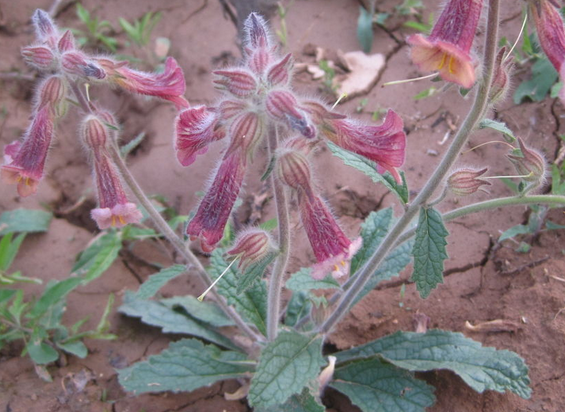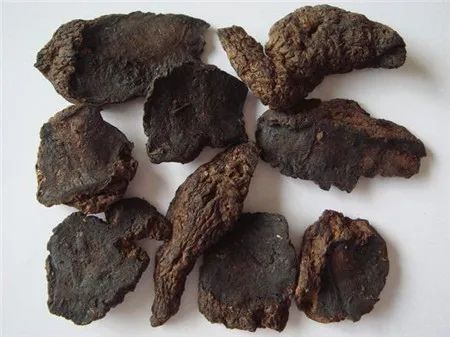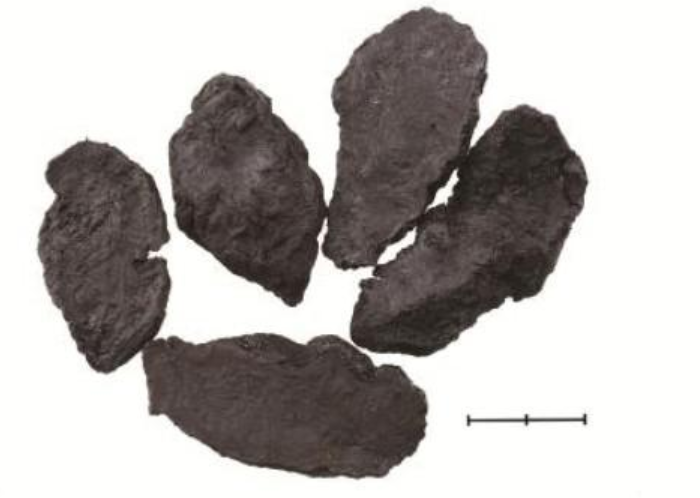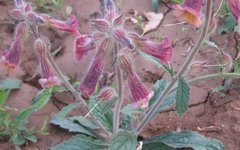Shudi Huang (熟地黄) is the fresh or dried tuber of the plant Rehmannia glutinosa, belonging to the Scrophulariaceae family. Clinically, we generally encounter Sheng Di Huang (生地黄) and Shudi Huang, which have different properties, functions, and indications; thus, it is essential to distinguish between them when used. Today, we will introduce Shudi Huang and its remarkable therapeutic effects on various conditions. Professor Xu Shu, a distinguished professor at Beijing University of Chinese Medicine and the chief TCM physician of the Department of Traditional Chinese Medicine at the 101st Hospital of the People’s Liberation Army, summarizes the following six points:
Shudi Huang has a sweet and slightly bitter taste, thick flavor, and light aroma. It is characterized by its ability to nourish Yin while also having Yang properties. It greatly replenishes essence and blood, nourishes kidney water, fills the bone marrow, benefits true Yin, supplements the original Qi of the kidneys, and nourishes the original essence of the five organs, making it a crucial herb for replenishing blood and essence. The renowned physician Zhang Jingyue from the Ming Dynasty was the first to adeptly use Shudi Huang. He stated that “essence is the foundation of form; form is born from essence; without essence, there is no form.” Thus, Zhang said: “Essence and blood are form, and form is essence and blood.” He believed that “Shudi Huang has a sweet and slightly bitter taste, thick flavor, and light aroma, and it is heavy… It greatly replenishes blood deficiency, nourishes kidney water, fills the bone marrow, benefits true Yin, specifically supplements the original Qi of the kidneys, and also treats the channels that store blood…” For treating chronic enteritis, Shudi Huang is used as the monarch herb, combined with Huang Lian (Coptis chinensis) and Huang Qin (Scutellaria baicalensis); for treating wind-cold colds, Shudi Huang is paired with Jing Jie (Schizonepeta) and Fang Feng (Saposhnikovia); for treating kidney Yang deficiency, Shudi Huang is combined with Gui Zhi (Cinnamon twig) and Fu Zi (Aconite). Only those with deep clinical knowledge can appreciate the subtleties of these combinations, as this experience is derived from the “Complete Works of Jingyue.” In the Qing Dynasty, physicians Fu Qingzhu and Chen Shiduo were also adept at using Shudi Huang. Mr. Chen Shiduo’s “New Compilation of Materia Medica” states: “Shudi Huang can generate blood and benefit essence, and it nourishes the marrow in the bones. True Yin energy cannot be generated without it, and the flames of deficiency heat cannot be reduced without it.” The famous formula, Yin Chen Zhu Fu Decoction, is representative of this, with Shudi Huang as the monarch herb.

▲ Shudi Huang (plant)
《中药临床手册》 states: Shudi Huang is inherently rich and greasy. If there is blood deficiency and insufficient liver and kidney function accompanied by poor spleen and stomach digestion, when using Shudi Huang, it can be combined with Qi-regulating herbs such as Chen Pi (Dried tangerine peel) and Sha Ren (Amomum fruit) to reduce its greasy nature that obstructs the stomach. This is the theoretical basis for later physicians combining Shudi Huang with Sha Ren. In my early clinical practice, I was concerned about the greasy nature of Shudi Huang, and I dared not exceed a dosage of 10-20g, adding 10g of Sha Ren, but the efficacy was poor. Now it seems that combining Sha Ren with Shudi Huang is purely speculative. The greasiness of Shudi Huang cannot be resolved by mixing it with Sha Ren to address the digestive issues of the spleen and stomach. This is because Shudi Huang requires prolonged decoction, while Sha Ren should be added later; if Shudi Huang is mixed with Sha Ren and decocted together, the properties of Sha Ren would have already evaporated, thus failing to reduce the greasiness of Shudi Huang and not affecting the digestive function of the spleen and stomach.
Additionally, regarding the issue of greasy tongue coating, many physicians have attempted to eliminate dampness from the San Jiao (Three Burners) with varying degrees of success. Early in my clinical practice, I encountered a patient with recurrent oral ulcers and a greasy tongue coating, presenting with dryness and a fine, weak pulse. I prescribed Gan Lu Decoction, using 30g of Sheng Di Huang and 60g of Shudi Huang, along with Ren Zhong Bai (a type of herb), and after 7 doses, the ulcers disappeared, and after 14 doses, the tongue coating was clear. I later encountered several patients with greasy tongues, some with throat pain and others with cough, and all responded well to the heavy use of Shudi Huang. My rationale for the extensive use of Shudi Huang comes from the San Jiao differentiation theory of Wu Jutong from the Qing Dynasty: “Treat the upper burner like a feather (it must be light to lift), treat the middle burner like a scale (it must be balanced to be stable); treat the lower burner like a weight (it must be heavy to sink).” Shudi Huang is heavy and directly enters the lower burner, fills essence, transforms essence into Qi, and Qi transforms into fluids, thus able to eliminate thick greasy tongue coating.

▲ Sheng Di Huang
01
Heavy Use of Shudi Huang for Treating Jaundice
Case Sharing Yang, a 75-year-old female, was first diagnosed on December 6, 2018.Chief Complaint:Skin and sclera yellowing accompanied by anorexia, nausea, and abdominal distension for over a month.Medical History:Diagnosed with gallbladder cancer at Jiaxing People’s Hospital in Zhejiang, underwent surgical drainage followed by TCM treatment with poor efficacy. Referred by a friend for treatment.Current Diagnosis:Facial complexion yellow and dull, skin and sclera dark yellow, spirit weary, poor appetite, dull pain under the right rib, normal bowel movements. Tongue coating white and greasy, pulse deep and weak.Pattern Differentiation:Kidney essence deficiency, Yang deficiency with cold congealing.Prescription:Yin Chen Zhu Fu Decoction with added Shudi Huang.Shudi Huang 30g, Yin Chen (Artemisia capillaris) 10g, Bai Zhu (Atractylodes macrocephala) 20g, Fu Zi (Aconite) 10g, Gan Jiang (Dried ginger) 3g, Zhi Gan Cao (Honey-fried licorice) 6g, Rou Gui (Cinnamon) 3g.Previous prescriptions included Yin Chen Hao Decoction and Zhi Zi Bai Pi Decoction with modifications. Based on the four diagnostic methods, I diagnosed it as Yin Jaundice and treated it with Yin Chen Zhu Fu Decoction plus 30g of Shudi Huang. After one week, the patient’s spirit significantly improved, appetite increased, jaundice gradually receded, and the tongue coating and pulse showed marked improvement. After consolidating with the original method for three months, the jaundice completely disappeared, followed by treatment with Xiang Sha Li Zhong Decoction.Clinical Insights:
Yang, a 75-year-old female, was first diagnosed on December 6, 2018.Chief Complaint:Skin and sclera yellowing accompanied by anorexia, nausea, and abdominal distension for over a month.Medical History:Diagnosed with gallbladder cancer at Jiaxing People’s Hospital in Zhejiang, underwent surgical drainage followed by TCM treatment with poor efficacy. Referred by a friend for treatment.Current Diagnosis:Facial complexion yellow and dull, skin and sclera dark yellow, spirit weary, poor appetite, dull pain under the right rib, normal bowel movements. Tongue coating white and greasy, pulse deep and weak.Pattern Differentiation:Kidney essence deficiency, Yang deficiency with cold congealing.Prescription:Yin Chen Zhu Fu Decoction with added Shudi Huang.Shudi Huang 30g, Yin Chen (Artemisia capillaris) 10g, Bai Zhu (Atractylodes macrocephala) 20g, Fu Zi (Aconite) 10g, Gan Jiang (Dried ginger) 3g, Zhi Gan Cao (Honey-fried licorice) 6g, Rou Gui (Cinnamon) 3g.Previous prescriptions included Yin Chen Hao Decoction and Zhi Zi Bai Pi Decoction with modifications. Based on the four diagnostic methods, I diagnosed it as Yin Jaundice and treated it with Yin Chen Zhu Fu Decoction plus 30g of Shudi Huang. After one week, the patient’s spirit significantly improved, appetite increased, jaundice gradually receded, and the tongue coating and pulse showed marked improvement. After consolidating with the original method for three months, the jaundice completely disappeared, followed by treatment with Xiang Sha Li Zhong Decoction.Clinical Insights: Jaundice can be classified into Yang Jaundice and Yin Jaundice. For Yang Jaundice, detoxification is prioritized, and the efficacy is superior to Yin Chen Hao Decoction. For Yin Jaundice, the text recommends using Yin Chen Zhu Fu Decoction, but often with poor efficacy. The reason lies in the cold congealing and stagnation, causing bile to not flow normally, leading to jaundice, with the root in the kidneys and the manifestation in the liver. The treatment focus is on replenishing kidney essence, as essence can transform into Qi, and Qi can regulate the normal flow of fluids, hence Shudi Huang is paired with Fu Zi to seek Yang within Yin, generating a little fire to produce Qi.
Jaundice can be classified into Yang Jaundice and Yin Jaundice. For Yang Jaundice, detoxification is prioritized, and the efficacy is superior to Yin Chen Hao Decoction. For Yin Jaundice, the text recommends using Yin Chen Zhu Fu Decoction, but often with poor efficacy. The reason lies in the cold congealing and stagnation, causing bile to not flow normally, leading to jaundice, with the root in the kidneys and the manifestation in the liver. The treatment focus is on replenishing kidney essence, as essence can transform into Qi, and Qi can regulate the normal flow of fluids, hence Shudi Huang is paired with Fu Zi to seek Yang within Yin, generating a little fire to produce Qi.

▲ Shudi Huang root tuber
02
Heavy Use of Shudi Huang for Treating Polycystic Ovary Syndrome
Case Sharing Liang, a 28-year-old female, was first diagnosed on August 30, 2016.Chief Complaint:Menstrual cessation for over a year.Medical History:The patient had not menstruated for over a year and had been diagnosed with polycystic ovary syndrome at multiple hospitals. The hospital prescribed Diane-35 for six months, but menstruation still did not resume, leading her to seek TCM treatment.Current Diagnosis:Menstrual cessation, obesity, pale complexion, no dry mouth, cold lower limbs, tongue fat with white greasy coating, pulse deep, slow, and weak.Pattern Differentiation:Kidney essence deficiency, Yang deficiency with cold congealing.Prescription:Si Wu Decoction combined with Shen Si Wei (Four Ingredients for the Kidneys) with modifications.Shudi Huang 60g, Dang Gui (Angelica sinensis) 30g, Bai Shao (White peony) 10g, Chuan Xiong (Ligusticum wallichii) 10g, Tu Si Zi (Cuscuta chinensis) 30g, Gou Qi Zi (Goji berry) 10g, Ba Ji Tian (Morinda root) 15g, Xian Ling Pi (Epimedium) 30g, Xian Mao (Curculigo) 10g, Zi He Che (Placenta) 10g, Lu Jiao Pian (Deer antler) 10g, Bai Zhu 60g. 14 doses.With this modified formula, after 9 months of treatment, menstruation returned to normal, and follow-ups showed no recurrence.Clinical Insights:
Liang, a 28-year-old female, was first diagnosed on August 30, 2016.Chief Complaint:Menstrual cessation for over a year.Medical History:The patient had not menstruated for over a year and had been diagnosed with polycystic ovary syndrome at multiple hospitals. The hospital prescribed Diane-35 for six months, but menstruation still did not resume, leading her to seek TCM treatment.Current Diagnosis:Menstrual cessation, obesity, pale complexion, no dry mouth, cold lower limbs, tongue fat with white greasy coating, pulse deep, slow, and weak.Pattern Differentiation:Kidney essence deficiency, Yang deficiency with cold congealing.Prescription:Si Wu Decoction combined with Shen Si Wei (Four Ingredients for the Kidneys) with modifications.Shudi Huang 60g, Dang Gui (Angelica sinensis) 30g, Bai Shao (White peony) 10g, Chuan Xiong (Ligusticum wallichii) 10g, Tu Si Zi (Cuscuta chinensis) 30g, Gou Qi Zi (Goji berry) 10g, Ba Ji Tian (Morinda root) 15g, Xian Ling Pi (Epimedium) 30g, Xian Mao (Curculigo) 10g, Zi He Che (Placenta) 10g, Lu Jiao Pian (Deer antler) 10g, Bai Zhu 60g. 14 doses.With this modified formula, after 9 months of treatment, menstruation returned to normal, and follow-ups showed no recurrence.Clinical Insights: Polycystic ovary syndrome is primarily characterized by amenorrhea, obesity, or acne. Ultrasound may reveal multiple immature follicles. I pondered: Why can’t the follicles develop normally? The root cause is congenital kidney Yang deficiency, with the uterine cavity being cold. Therefore, the treatment should greatly replenish essence and blood, warm the uterus, and regulate the Chong and Ren channels, with heavy use of Shudi Huang (30-60-90g) being key, while also supplementing congenital essence, hence the addition of Zi He Che and Lu Jiao.
Polycystic ovary syndrome is primarily characterized by amenorrhea, obesity, or acne. Ultrasound may reveal multiple immature follicles. I pondered: Why can’t the follicles develop normally? The root cause is congenital kidney Yang deficiency, with the uterine cavity being cold. Therefore, the treatment should greatly replenish essence and blood, warm the uterus, and regulate the Chong and Ren channels, with heavy use of Shudi Huang (30-60-90g) being key, while also supplementing congenital essence, hence the addition of Zi He Che and Lu Jiao. ▲ Shudi Huang Source: “Illustrated Guide to Chinese Medicinal Herbs”
▲ Shudi Huang Source: “Illustrated Guide to Chinese Medicinal Herbs”
03
Heavy Use of Shudi Huang for Treating True Cold-False Heat Syndrome
True cold-false heat syndrome is primarily characterized by sore throat, fever, dry mouth, and cold lower limbs, with a pale, swollen tongue with tooth marks and a weak pulse, treated with an enhanced Yin Chen Zhu Fu Decoction.Prescription: Shudi Huang 90g, Shan Zhu Yu (Cornus) 15g, Mai Dong (Ophiopogon) 10g, Fu Ling (Poria) 30g, Wu Wei Zi (Schisandra) 10g, Mu Dan Pi (Peony root) 10g, Ze Xie (Alisma) 10g, Rou Gui (Cinnamon) 3g, Fu Zi (Aconite) 10g, Ren Zhong Bai 10g, Gui Jiao (Tortoise shell) 10g.
04
Heavy Use of Shudi Huang for Treating Deficiency Asthma
Asthma is often a mix of deficiency and excess, exacerbated by external pathogens. For asthma with a rough pulse, useShudi Huang 90g, Dang Gui 21g, Xing Ren (Apricot kernel) 10g, Tao Ren (Peach kernel) 10g, Di Long (Earthworm) 15g, Gan Cao 6gfor effective treatment. Heavy use of Shudi Huang can transform phlegm, stop wheezing, and replenish essence, serving three purposes with one herb.
05
Shudi Huang for Stimulating Appetite
Chen Shiduo stated that Shudi Huang is a sacred herb for stimulating appetite. It can stimulate appetite because “the stomach is the gate of the kidneys”; when kidney water is abundant, the stomach’s fluids are naturally moistened, thus when kidney Qi is sufficient, stomach Qi is also sufficient, and when kidney Qi rises, stomach Qi also rises. Therefore, I often useYin Chen Zhu Fu Decoctionto treat anorexia.
06
Shudi Huang for Stopping Diarrhea
Shudi Huang’s ability to stop diarrhea is not widely known among physicians, as its greasy nature is often overlooked. However, when there is essence deficiency causing diarrhea, it has been remarkably effective. The “Materia Medica Discourse” states: Shudi Huang is sweet and warm, greatly replenishing kidney essence. For any lower burner deficiency leading to loose stools, when other herbs are ineffective, taking Shudi Huang alone can stop diarrhea, but it must be used in a dosage of 60-90g. If used in smaller amounts, it can cause discomfort and be ineffective. The ability of Shudi Huang to treat kidney-related diarrhea is similar to Bai Zhu’s (Atractylodes) ability to treat spleen-related diarrhea; although their actions differ, their effects are similar. I have highlighted this due to the reluctance of many physicians to use it.【Source: Reading Traditional Chinese Medicine, content excerpted from “Xu Shu’s Use of Medicine Like Warfare 2” (Published by China Traditional Chinese Medicine Press, authored by Xu Shu)】


